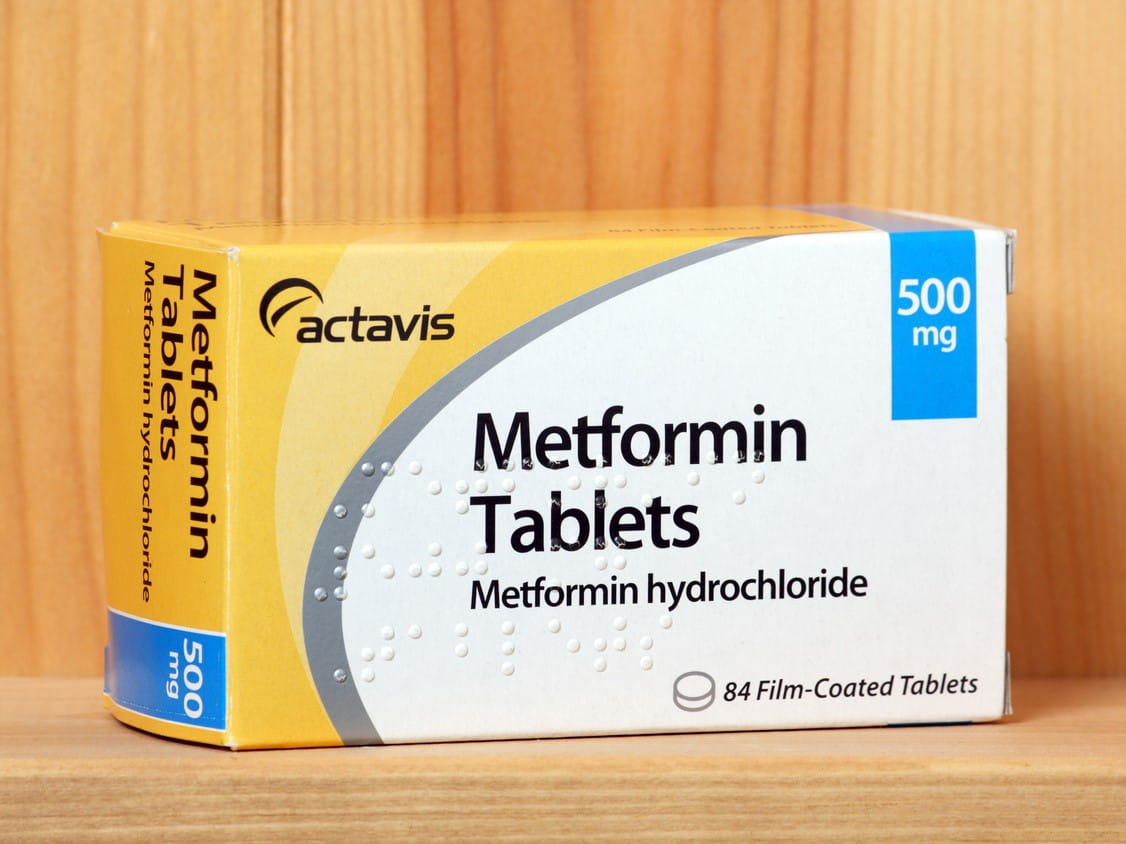Is Metformin Safe?

The Bottom Line
Metformin is a medication used to treat type 2 diabetes. It has mild side effects and is generally safe when taken as prescribed. Rarely, it can cause a severe and life-threatening condition called lactic acidosis in patients with specific risk factors.

What is metformin?
Metformin is a medication used to treat type 2 diabetes. It can be prescribed alone or with a combination of other anti-diabetes medications, including insulin. It belongs to a class of drugs called biguanides. Common brand names of metformin include Glucophage® and Glumetza®. The usual starting dosage of metformin is 500–1000 mg/day. Increases are then based on blood sugar measurements.
Is metformin insulin?
Metformin is not insulin. Insulin is a hormone that helps the body use or store sugar (glucose) in response to food. This is how it prevents the amount of sugar circulating in the bloodstream from being too high. Patients with type 2 diabetes make insulin, but it might not be enough or their bodies are unable to use it (insulin resistance). Metformin reduces the concentration of sugar in the blood by helping the body use insulin more effectively as well as by reducing the amount of sugar absorbed from food or released by the liver.
What are metformin’s side effects?
The most common side effects of metformin are nausea, vomiting, diarrhea, flatulence, indigestion, abdominal pain, and headache. Vitamin B12 deficiency has also been reported. Metformin alone does not normally cause low blood sugar.
Metformin can cause a rare but serious and life-threatening condition called lactic acidosis—a condition in which there is too much lactic acid in the blood. Risk factors for lactic acidosis include: 65 years of age or older, poor kidney or liver function, radiological study with contrast dye, excessive alcohol use, chronic heart or respiratory conditions that cause a state of low oxygen in the body, and use of certain drugs that interact with metformin.
What foods and medicines should I avoid while on metformin?
It is not possible to list all medicines that interact with metformin. Carefully discuss your medical history and your current medications with your healthcare providers before starting metformin. A drug monograph provided with the medication or by the pharmacy will also list all known drug-drug interactions with metformin.
Important interactions are:
- Iodinated contrast agents: Iodine-containing contrast dyes are often administered intravenously prior to imaging studies such as CT scans or angiography to enhance their visibility. In patients who are on metformin, administration of iodine-containing contrast agents has led to lactic acidosis.
- Carbonic anhydrase inhibitors: Examples of this type of medication include topiramate, zonisamide, and acetazolamide. Concomitant use of these medications can increase the risk of lactic acidosis with metformin.
- Drugs that interfere with metformin elimination by the kidneys: Examples of this type of medication include cimetidine, ranolazine, and dolutegravir. Concomitant use of these medications with metformin can result in too much metformin in the body.
- Alcohol: Excessive use of alcohol while taking metformin can increase the risk of lactic acidosis.
- Other anti-diabetes medications: Although metformin alone is not expected to result in hypoglycemia (low blood sugar), taking metformin with other oral diabetes medications or insulin can increase the risk of hypoglycemia.
- Metformin is not known to interact with specific foods. However, you might need to avoid certain foods, like those with high sugar or carbohydrate content, for better control of your blood glucose.
Can I take metformin with alcohol?
Excessive, either short-term (i.e., binge drinking) or chronic use of alcohol while taking metformin should be avoided. Inform your doctor if you drink alcohol to help determine if metformin is a safe option for you.
Can I take metformin while pregnant?
Published data from animals and humans have not shown an association between metformin and adverse maternal or fetal effects. However, the available data are too few to say this with absolute certainty (pregnancy category B). Because uncontrolled diabetes during pregnancy can pose great danger, your healthcare provider will carefully weigh the risks and benefits of metformin before prescribing it to you during pregnancy.
What happens if I accidentally take metformin after a CT scan?
In patients with any of the risk factors listed above, iodinated contrast agents can cause insult to the kidneys. This predisposes patients who are on metformin for rare, but possibly deadly, lactic acidosis. Notify your physician if you accidentally take your metformin after being instructed to withhold it following an imaging study that used an iodinated contrast agent. Depending on your risk factors, your physician might choose to monitor you, and particularly your kidney function, more closely.
I accidentally took too much metformin. What should I expect?
This depends on the amount taken as well as individual factors such as age, weight, co-existing medical conditions, and the presence of other medications. If you’re concerned about an exposure to metformin or are experiencing worrisome side effects from taking metformin, get guidance from Poison Control immediately. Help is available online at www.poison.org or by phone at 1-800-222-1222. Both options are free, confidential, and available 24 hours a day. The vast majority of patients who accidentally take a double dose of their metformin have either no symptoms at all or mild stomach upset like nausea, vomiting, or diarrhea. On the other hand, a large overdose might result in life-threatening effects like lactic acidosis.
My child just took one or more of my metformin. What should I do and how concerned should I be?
Get help online at www.poison.org or call 1-800-222-1222. Both options are free, confidential and available 24 hours a day. After taking into account your child’s age, weight, and the amount taken, you’ll be advised on whether your child can be monitored at home or if evaluation in an ER Is warranted. Poison Control will review signs and symptoms that could warrant concern. Generally, small, accidental ingestions by children are well tolerated and might result in only mild stomach upset.
Serkalem Mekonnen, RN, BSN, MPH, CSPI
Certified Specialist in Poison Information
Poisoned?
Call 1-800-222-1222 or
Prevention Tips
- Store medicines up, away and out of sight and reach of children and pets.
- Have your pharmacist and physician check for any interactions between metformin and your other medications and supplements.
- Before starting metformin, alert your physician if you have kidney or liver disease, have any new medical conditions, drink alcohol, are pregnant or might become pregnant, or have recently had a diagnostic imaging study or if one is coming up.
This Really Happened
A 54-year-old woman with type 2 diabetes was taking 1000 mg of metformin twice a day. She came to an ER because she had severe diarrhea and vomiting. Once in the ER, she was confused and had dangerously low blood pressure. Laboratory studies revealed severe lactic acidosis: the pH of her blood was 6.57 (normal 7.38–7.42) and her lactate was 16.3 mmol/L (normal less than 2 mmol/L). While still in the ER, she became unresponsive and went into cardiac arrest but was successfully resuscitated. Despite aggressive medical treatment, her lactic acidosis persisted until she received several rounds of hemodialysis.
The woman recovered and was discharged home after 15 days of hospitalization. It was thought that the diarrhea and vomiting led to dehydration, which then injured her kidneys. The metformin she’d been taking added to this injury, which progressed into severe and almost-deadly lactic acidosis (from Umeda et al., 2018).
For More Information
References
Brady WJ, Carter CT. Metformin overdose. Am J Emerg Med. 1997;15(1):107-108.
Metformin. Elsevier Drug Information; revised 2022 Oct 29 [accessed 2022 Dec 2].
Poisoned?
Call 1-800-222-1222 or
Prevention Tips
- Store medicines up, away and out of sight and reach of children and pets.
- Have your pharmacist and physician check for any interactions between metformin and your other medications and supplements.
- Before starting metformin, alert your physician if you have kidney or liver disease, have any new medical conditions, drink alcohol, are pregnant or might become pregnant, or have recently had a diagnostic imaging study or if one is coming up.
This Really Happened
A 54-year-old woman with type 2 diabetes was taking 1000 mg of metformin twice a day. She came to an ER because she had severe diarrhea and vomiting. Once in the ER, she was confused and had dangerously low blood pressure. Laboratory studies revealed severe lactic acidosis: the pH of her blood was 6.57 (normal 7.38–7.42) and her lactate was 16.3 mmol/L (normal less than 2 mmol/L). While still in the ER, she became unresponsive and went into cardiac arrest but was successfully resuscitated. Despite aggressive medical treatment, her lactic acidosis persisted until she received several rounds of hemodialysis.
The woman recovered and was discharged home after 15 days of hospitalization. It was thought that the diarrhea and vomiting led to dehydration, which then injured her kidneys. The metformin she’d been taking added to this injury, which progressed into severe and almost-deadly lactic acidosis (from Umeda et al., 2018).
